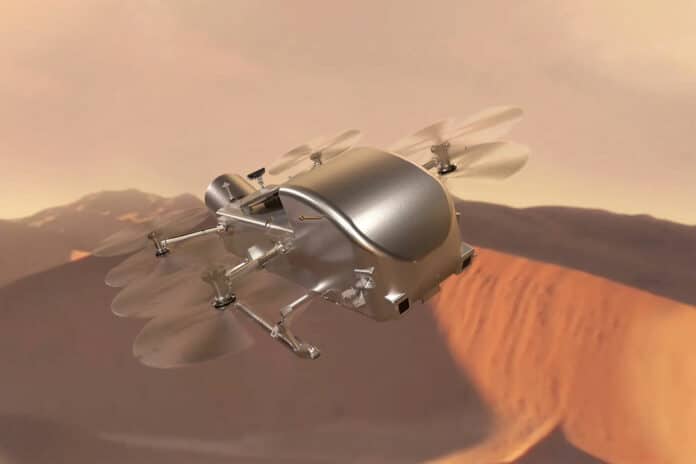NASA has given the green light to its Dragonfly rotorcraft mission to explore Saturn’s organic-rich moon Titan. Despite facing several delays due to COVID-19 and cost overruns, the mission is now set to move forward toward the final design, construction, and testing phases of the entire spacecraft and science instruments.
“Dragonfly is a spectacular science mission with broad community interest, and we are excited to take the next steps on this mission,” said Nicky Fox, associate administrator of the Science Mission Directorate at NASA Headquarters in Washington. “Exploring Titan will push the boundaries of what we can do with rotorcraft outside of Earth.”
The mission achieved a major milestone in early 2023 by successfully passing all the success criteria of its Preliminary Design Review. However, an updated budget and schedule were required due to the current funding environment.
The mission team worked diligently on developing an updated plan, which was presented in November 2023 and conditionally approved, pending the outcome of the fiscal year 2025 budget process. Despite these challenges, the mission was authorized to proceed with work on the final mission design and fabrication to ensure that it stayed on schedule.
With the release of the president’s fiscal year 2025 budget request, Dragonfly is confirmed with a total lifecycle cost of $3.35 billion and a launch date of July 2028. This reflects a cost increase of about two times the proposed cost and a delay of more than two years from when the mission was originally selected in 2019. To compensate for the delayed arrival at Titan, NASA also provided additional funding for a heavy-lift launch vehicle to shorten the mission’s cruise phase.
NASA is planning to send a rotorcraft to Titan in 2034 and will fly to dozens of promising locations on the moon, looking for prebiotic chemical processes common on both Titan and the early Earth before life developed. This will be the first time NASA will fly a vehicle for science on another planet. The design of the rotorcraft, with eight rotors, flew like a large drone.
Dragonfly certainly appears to be an intriguing possibility for exploring Titan’s varied terrain. Its unique ability to hop around and examine the landscape and boggy shores could be a game-changer. The use of a radiothermal generator and aluminum/titanium rotors to power Dragonfly is an innovative approach to space exploration.
The mission’s objectives are not only to conduct a geological survey but also to investigate the organic chemistry of Titan and search for biosignatures, even though Titan is not usually considered a good candidate for extraterrestrial life. Instead, it is thought of more as an example of the primordial soup that scientists believe gave rise to life on Earth.
Dragonfly will use its sensors to study the chemistry of the area, record local weather, and seismology to learn more about the interior structure of Titan.
However, the mission will be delayed due to budget arguments, which will require a larger, more powerful rocket to ensure that it lands on Titan by the prescribed 2034 date.
